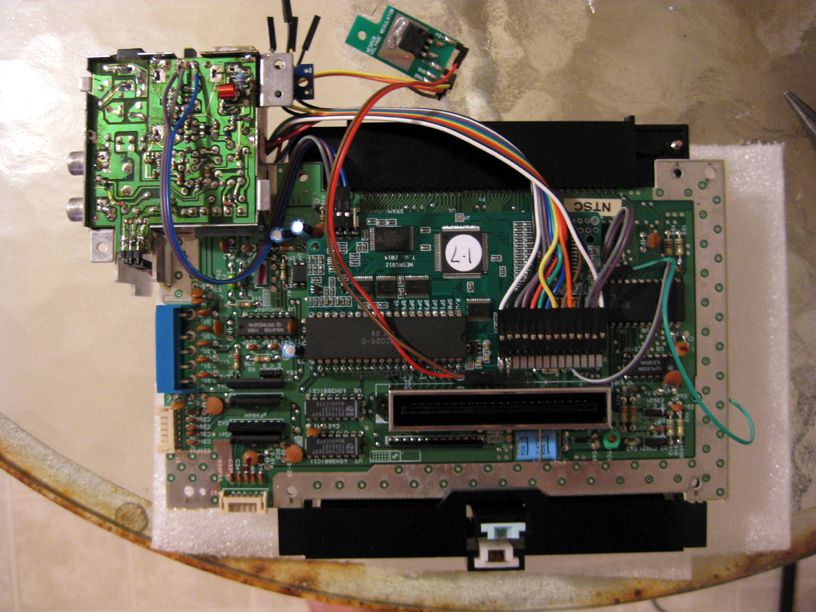I just bought an NES pre-modded with the NESRGB. I'm mostly pleased so far, but I am slightly worried about the picture quality.
This particular modder installs SNES/N64 multi-out jacks, so I'm using SNES cables. I notice light diagonal bars in the s-video output, confirmed on two different cables which don't produce this effect on my SNES.
Using RGB SCART to the XRGB-Mini, I notice another issue. In motion it looks like flickering horizontal lines. If you imagine that the screen is divided into four horizontal sections, the noise seems concentrated in the second section from the top. Using the Mini's "freeze" function, I can see the noise as sort of blotchy, blocky looking artifacts. It shows up well against the sky in Super Mario Bros.
Theorizing about the cause: I confess I'm using
this third-party power supply, but I hope it's not the problem because it's supposed to be a good quality adapter with regulated voltage. Unfortunately I can't find my original NES AC adapter at the moment to test (I'm sure it's packed away in a box somewhere). I also tried the same site's
Genesis 1 power supply which is 1.25A as opposed to their NES adapter's 1.00A -- I thought the extra amperage might help, but no, same results.
Has anyone else experienced either of these types of noise? It's a bummer since I've been eagerly anticipating this mod for a long while.
Edit: Just made an interesting discovery. It seems the RGB noise is the worst in only one of the three palette switch settings. It is greatly reduced (maybe not even present at all) on the other palettes. Is it plausible that there could be a flaw with the switch, or its wiring?

